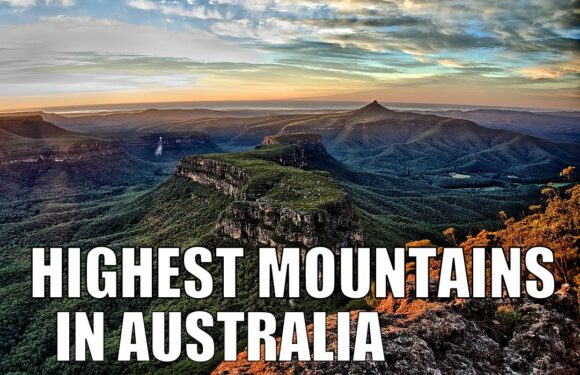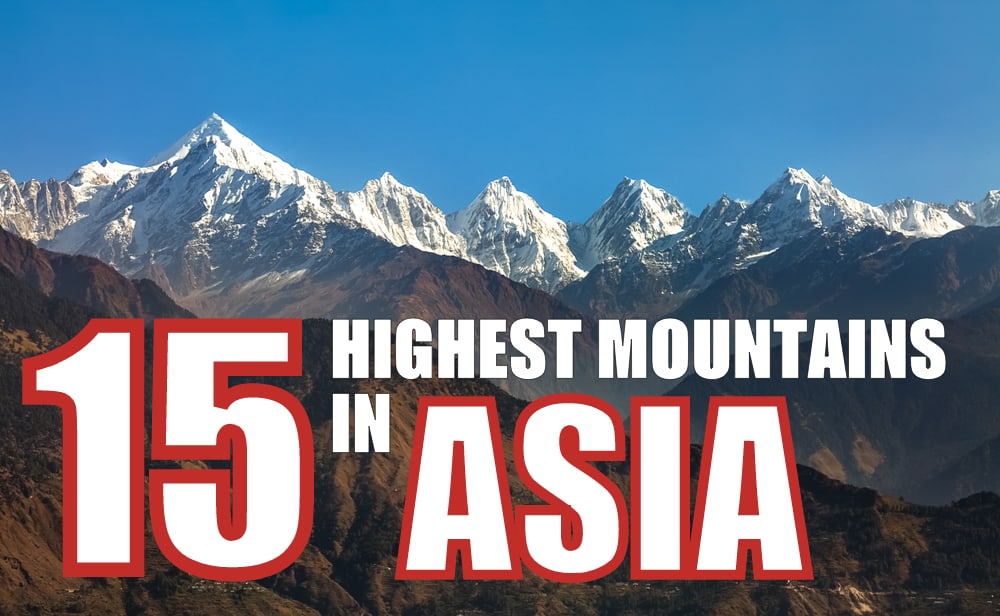
While Mount Everest often captures the limelight as the pinnacle of mountaineering, Asia’s landscape is littered with giants that rival Everest. This continent, home to the famous Himalayas and the rugged Karakoram range, boasts the world’s tallest mountains.
Why Are All the Tallest Mountains in Asia?
The heights of Asian mountains, particularly those within the Himalayas and the Karakoram ranges, can be attributed to the planet’s plate tectonics. There are two types of collisions in Earth’s crust: ocean-continent collision and continent-continent collision.
Ocean-Continent Collision
When an oceanic plate collides with a continental plate, the denser oceanic plate is forced underneath the lighter continental plate in a process called subduction. In other words, the continental plate rises while the oceanic plate sinks into the Earth.
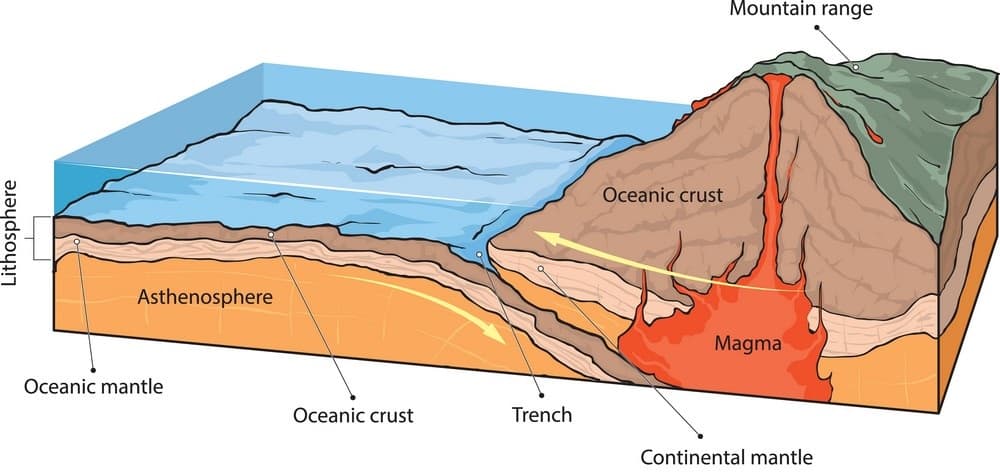
This action leads to the formation of mountain ranges along the continental margin. These mountains are generally not as high as those formed by continent-continent collisions. Examples outside Asia, like the Andes in South America, illustrate how ocean-continent collisions create significant but comparatively shorter mountain ranges.
Continent-Continent Collision
In contrast, continent-continent collision occurs when two continental plates converge. Since both plates are relatively light and buoyant compared to oceanic plates, neither plate is easily subducted into the mantle. Instead of sinking into the Earth, one of the plates is forced upwards, creating very high mountain ranges.

This is precisely what happened with the Himalayas, where the Indian Plate collided with the Eurasian Plate. The process is like crumpling a rug against a wall; the rug folds and rises, just as the Earth’s crust does to form mountains.
The Himalayas began forming around 50 million years ago. As the Indian Plate moves northward and forces itself beneath the Eurasian Plate, the crust continues to fold and uplift. This ongoing tectonic activity is why the Himalayas are still growing, gaining about 5 centimeters (2 inches) every year.

The Tallest Mountains in Asia
1. Mount Everest – 29,032 feet (8,849 meters)
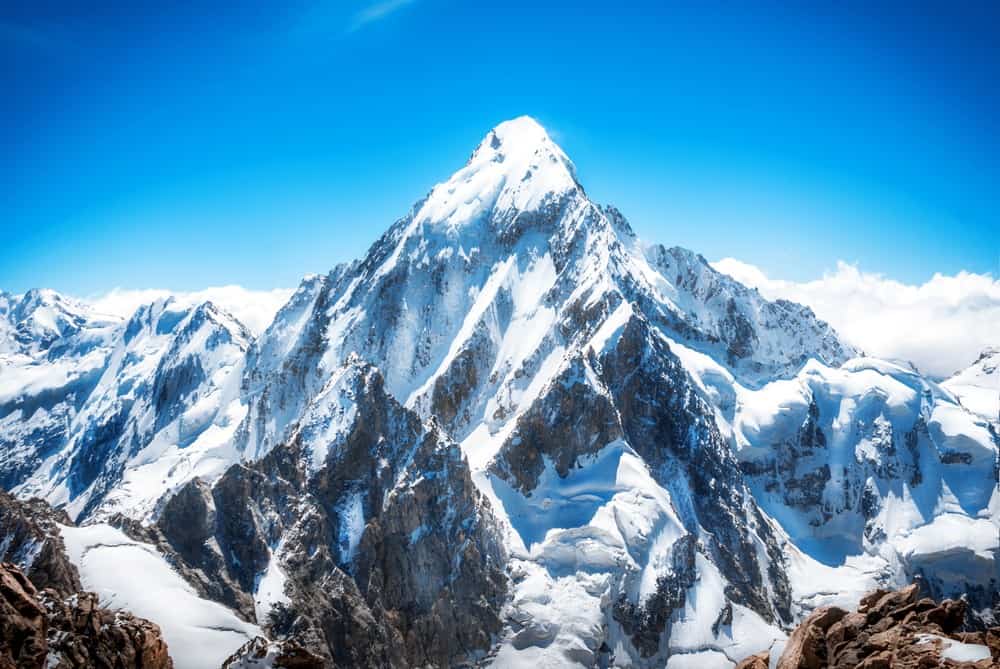
Mount Everest is the highest peak in Asia and the tallest mountain on Earth. The mountain is named after Sir George Everest, the British surveyor-general of India. It is also known by its Tibetan name, Chomolungma, meaning “Mother Goddess of the World.” The mountain’s first successful ascent by Sir Edmund Hillary and Tenzing Norgay in 1953 remains one of the most celebrated achievements in mountaineering. Everest’s imposing presence on the Nepal-Tibet border continues to attract climbers from around the globe, drawn to its height and the challenge of standing on the tallest mountain in the world.
2. K2 – 28,251 feet (8,611 meters)
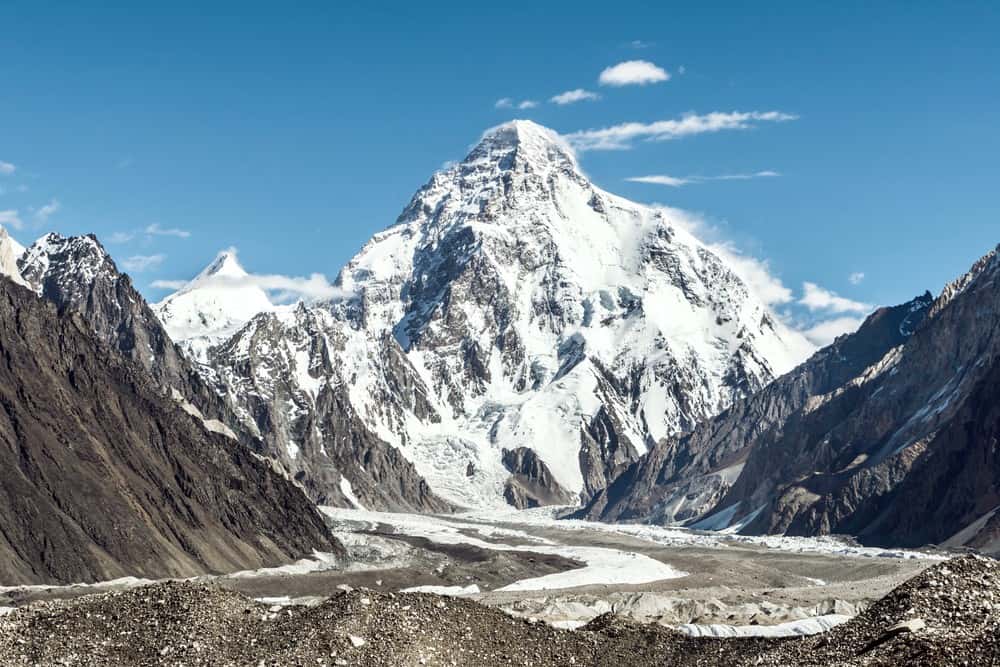
K2 is the world’s second-highest mountain. It is known for its difficulty and danger, earning it the nickname “The Savage Mountain.” Unlike Everest, K2 is not named after a geographical surveyor but rather derives its name from the notation used by the Great Trigonometrical Survey of British India. It was designated as K2 because it was the second peak in the Karakoram range, located on the China-Pakistan border. K2’s treacherous weather and difficult ascent routes contribute to its reputation as one of the most dangerous mountains to climb. It is only attempted by the world’s most skilled and experienced mountaineers.
3. Kangchenjunga – 28,169 feet (8,586 meters)

Kangchenjunga is the third highest mountain in the world. It is revered by the people of Sikkim and considered sacred. The name Kangchenjunga is derived from Tibetan, meaning “Five Treasures of the High Snow,” a reference to the mountain’s five peaks. Straddling the border between Nepal and India, it was once believed to be the highest mountain in the world until measurements in 1852 revealed otherwise. The first ascent in 1955 by Joe Brown and George Band was conducted with respect for local beliefs, stopping just short of the summit to keep the peak inviolate.
4. Lhotse – 27,940 feet (8,516 meters)
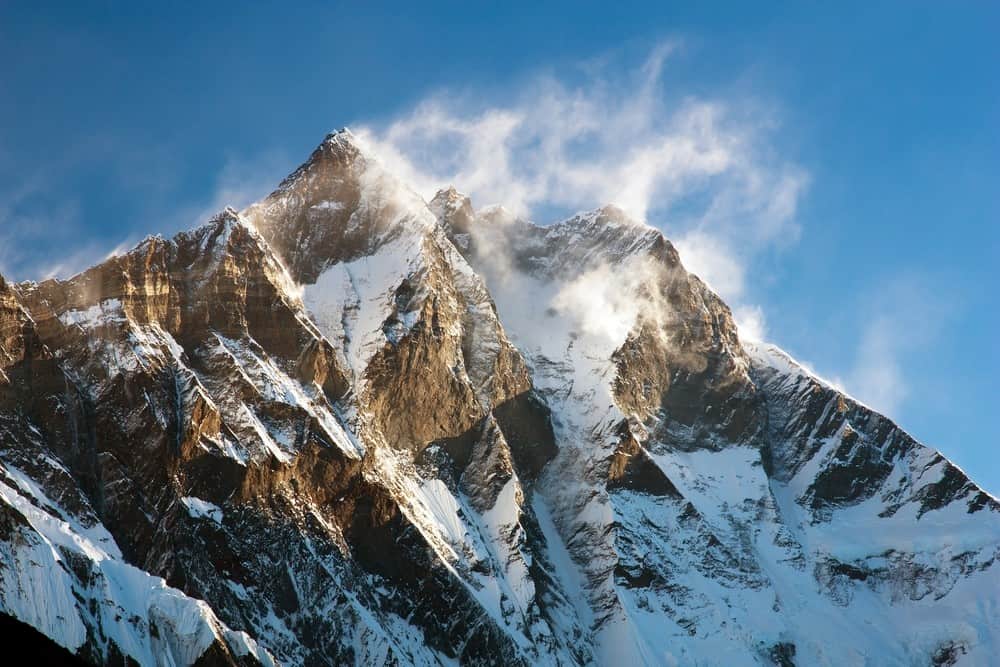
Lhotse, meaning “South Peak” in Tibetan, is part of the Everest massif. It lies directly south of Mount Everest. Its close proximity to the world’s highest mountain means it shares some of the same climbing routes until a certain point where climbers then diverge towards Lhotse’s summit. First climbed in 1956 by a Swiss team, Lhotse stands unique with its dramatic south face, one of the largest and most challenging mountain faces in the world.
5. Makalu – 27,838 feet (8,485 meters)
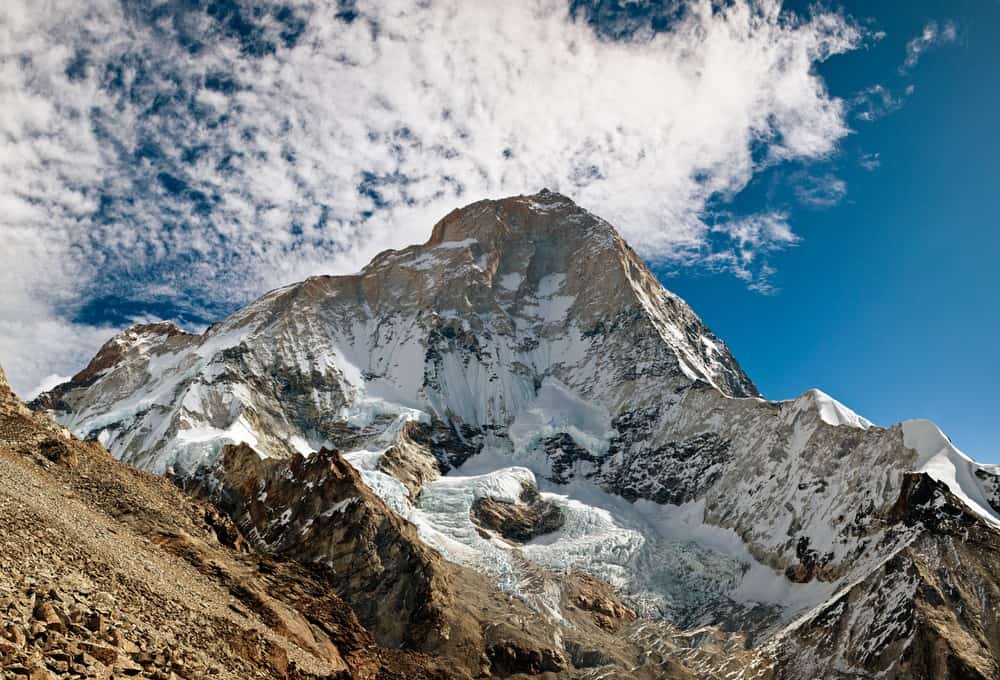
Makalu is the world’s fifth-highest mountain, renowned for its pyramid shape and sharp, isolated peak. The name Makalu is derived from the Sanskrit Maha Kala, a name for the Hindu god Shiva that translates to “Big Black,” referring to the mountain’s imposing appearance. Makalu is located in the Mahalangur Himalayas, southeast of Everest, on the border between Nepal and Tibet. It presents one of the most difficult climbs due to its harsh weather and steep pitches. It was first ascended in 1955 by a French expedition.
6. Cho Oyu – 26,864 feet (8,188 meters)
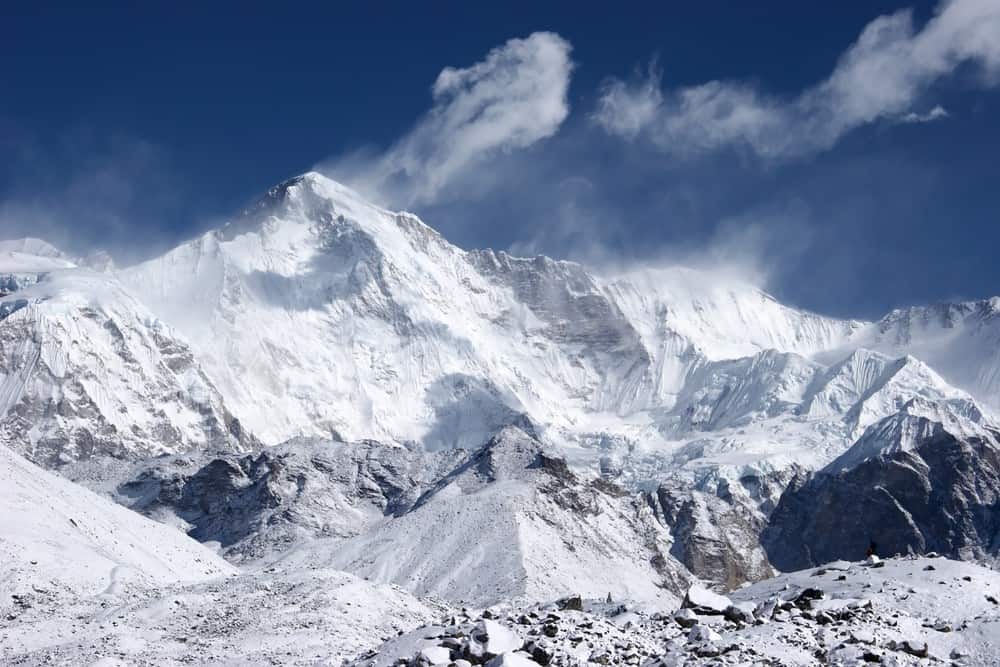
Cho Oyu the sixth highest mountain in the world. It is considered one of the most accessible 8,000-meter peaks, offering a relatively safer climb, and thus is a popular choice for climbers looking to experience high-altitude expeditions. Located about 20 kilometers west of Everest, on the Nepal-Tibet border, Cho Oyu’s first ascent was achieved in 1954 by an Austrian team. Its reputation as a friendly giant does not detract from the views. Cho Oyu means “Turquoise Goddess” in Tibetan.
7. Dhaulagiri – 26,795 feet (8,167 meters)
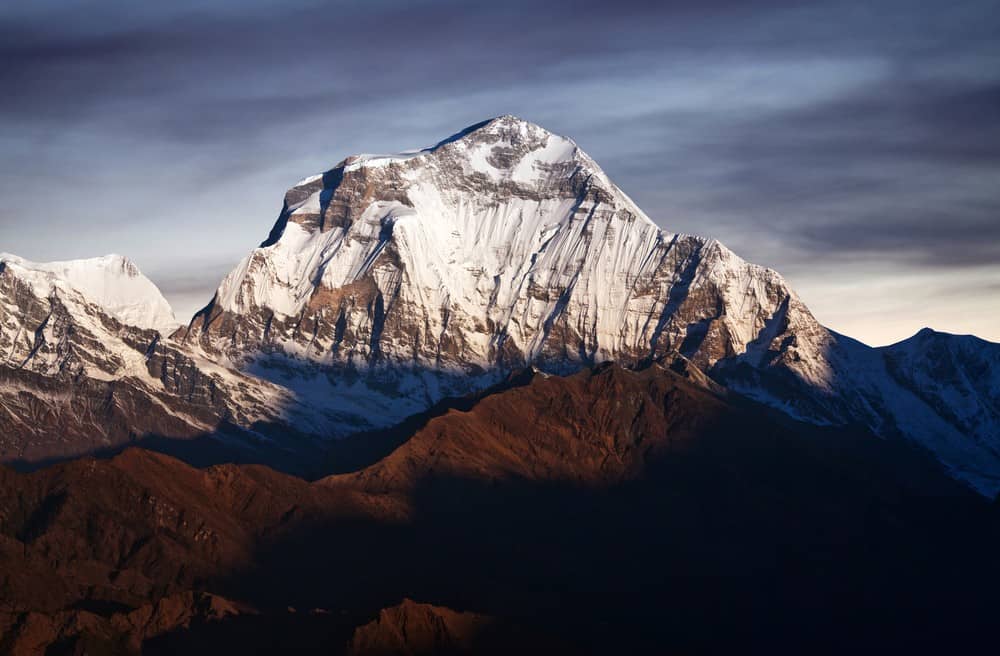
Dhaulagiri, whose name translates to “White Beautiful Mountain” in Sanskrit, is the seventh-highest mountain in the world. Located in Nepal, this mountain has a steep rise from the surrounding landscape, making it a prominent feature visible from miles away. Dhaulagiri was first ascended in 1960 by a Swiss/Austrian/Nepali team, marking a significant achievement in the history of mountaineering.
8. Manaslu – 26,781 feet (8,163 meters)

Manaslu is known as “Mountain of the Spirit.” It derives its name from the Sanskrit word manasa, meaning “intellect” or “soul.” Situated in the Nepalese Himalayas, Manaslu offers a more remote and less crowded climbing experience compared to Everest. It has earned the nickname “Killer Mountain” due to its high fatality rate among mountaineers attempting to summit. The mountain’s treacherous conditions, including avalanches, severe weather, and unforgiving terrain, contribute significantly to its reputation. These risks, combined with its remote location, make climbing Manaslu a difficult undertaking. It was first successfully scaled in 1956 by a Japanese expedition.
9. Nanga Parbat – 26,660 feet (8,126 meters)
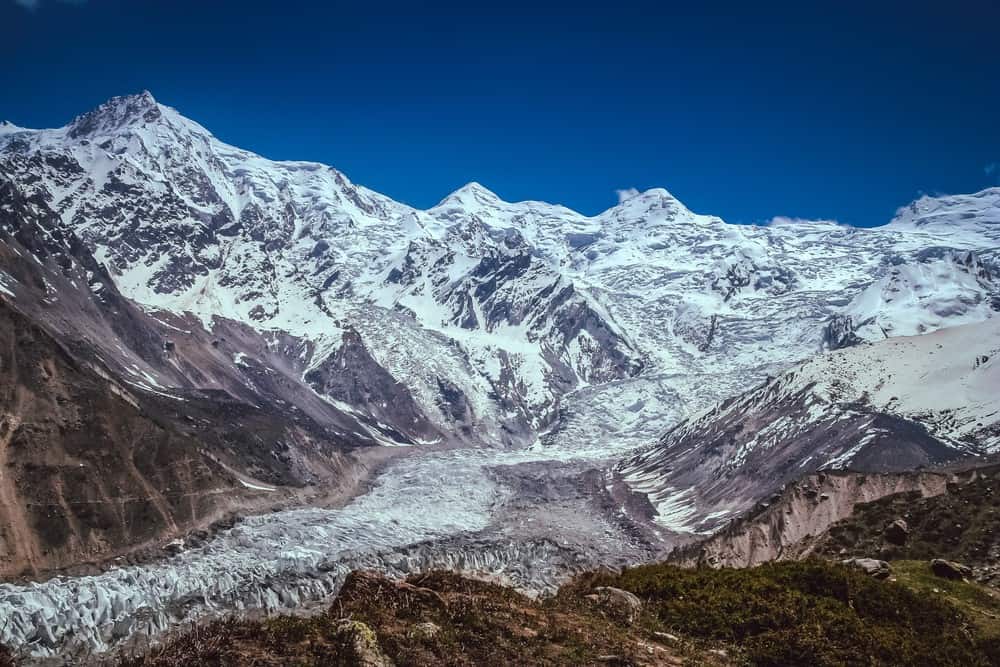
Nanga Parbat is notorious for its climbing difficulty and the high number of mountaineering deaths. Located in the Gilgit-Baltistan region of Pakistan, its name means “Naked Mountain” in Urdu, a reference to its exposed and daunting rock faces. Nanga Parbat’s Rupal Face is the highest mountain face in the world. Despite its fearsome reputation, it was first ascended in 1953 by Hermann Buhl, who accomplished the feat solo and without supplemental oxygen..
10. Annapurna – 26,545 feet (8,091 meters)

Annapurna, a name that means “Goddess of the Harvests” in Sanskrit, is a massif in the Himalayas in north-central Nepal. It is known for Annapurna I, the tenth highest peak in the world. It was the first of the 8,000-meter peaks to be climbed. The ascent in 1950 by Maurice Herzog and Louis Lachenal of France stands as a landmark event in climbing history. However, Annapurna is also considered one of the most dangerous mountains to climb, with a high fatality rate among those who attempt its summit.
11. Gasherbrum I – 26,509 feet (8,080 meters)

Gasherbrum I is part of the Gasherbrum massif in the Karakoram range on the Pakistan-China border. The name Gasherbrum comes from “rgasha” (beautiful) and “brum” (mountain) in Balti, reflecting its majestic presence. It was first climbed in 1958 by an American expedition. Gasherbrum I is noted for its relatively low prominence over the nearby terrain, making it one of the less visually dominant peaks despite its height. Gasherbrum is also known as Hidden Peak due to its remote location.
12. Broad Peak – 26,414 feet (8,051 meters)
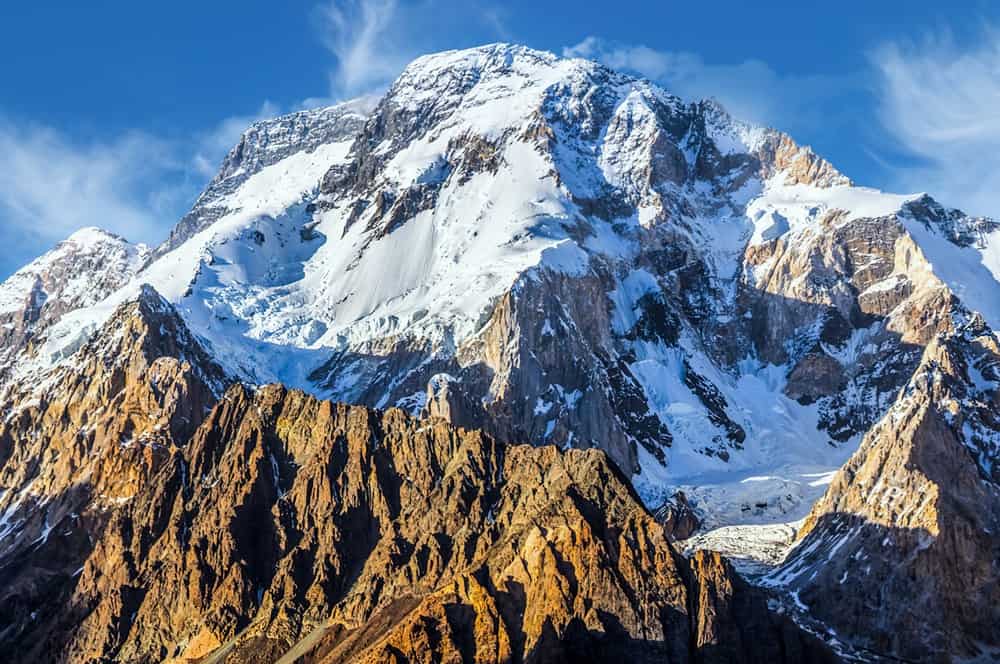
Broad Peak has an extensive summit that stretches over 1.5 kilometers, earning it the name. Located in the Karakoram range, it presents climbers with a relatively straightforward ascent, though not without its challenges. Broad Peak was first summited in 1957 by an Austrian team, establishing it as a notable peak among the world’s highest mountains. Its broad summit plateau has deceived many climbers, who have thought they reached the highest point when they had not.
13. Gasherbrum II – 26,362 feet (8,035 meters)
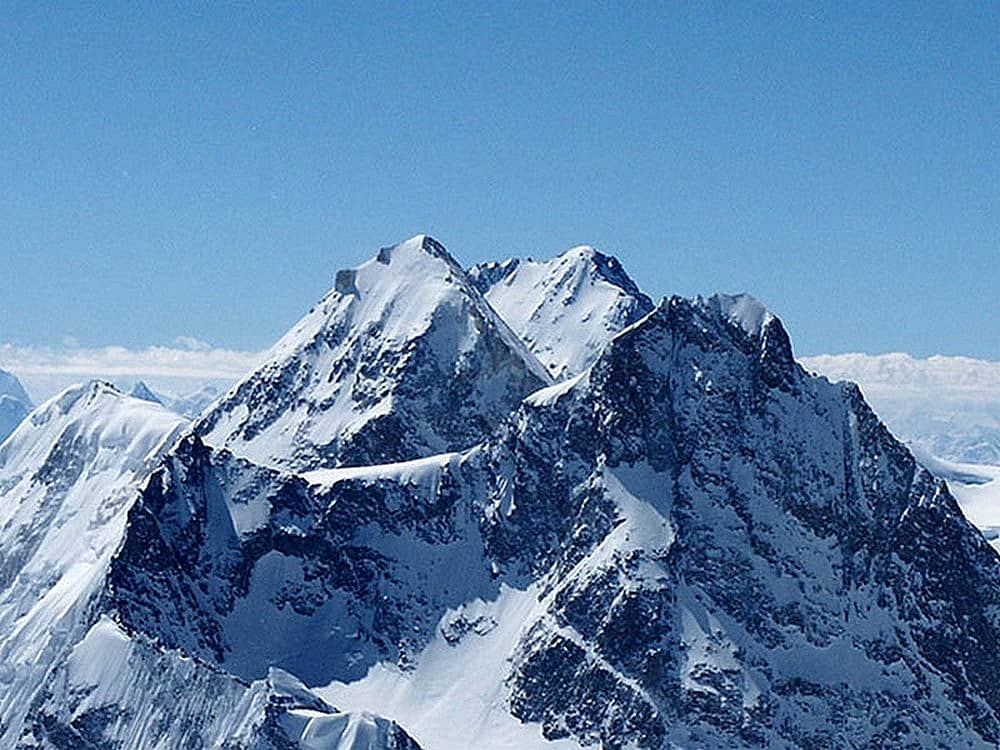
Gasherbrum II, also situated in the Karakoram range, is often referred to as the “shining wall” due to the imposing ice face that characterizes its western slope. The mountain was first climbed in 1956 by an Austrian team, marking it as the 13th highest peak in the world. Gasherbrum II is considered among the easier of the 8,000-meter peaks to climb, offering mountaineers a somewhat less technically demanding route to its summit.
14. Shishapangma – 26,335 feet (8,027 meters)

Shishapangma is unique as the only 8,000-meter peak located entirely within Tibet. It is unique among the world’s tallest mountains for being the only one not straddling a national border. Its name, which can be translated as “Crest above the Grassy Plains,” hints at its solitary splendor. Known locally as Gosainthan, translating to “the deity’s abode,” Shishapangma remained relatively obscure to the outside world until its first ascent in 1964 by a Chinese expedition. The mountain’s relative isolation, coupled with restrictions on access imposed by the Chinese government, has meant that Shishapangma has seen fewer climbers compared to other peaks of the Himalayas.
15. Gyachung Kang – 26,089 feet (7,952 meters)

Gyachung Kang rounds out our list of the 15th highest mountains in Asia. Located on the border between Nepal and China, this peak is notable for being the highest mountain that is not part of the esteemed 8,000-meter club. First ascended in 1964 by a Japanese expedition, Gyachung Kang is often overshadowed by its more famous neighbors in the Himalayan range. Its location in the Mahalangur section of the Himalayas, close to both Everest and Cho Oyu, means that it shares the same dramatic landscape and extreme conditions characteristic of this region.
How Does Mount Kilimajaro Compare?
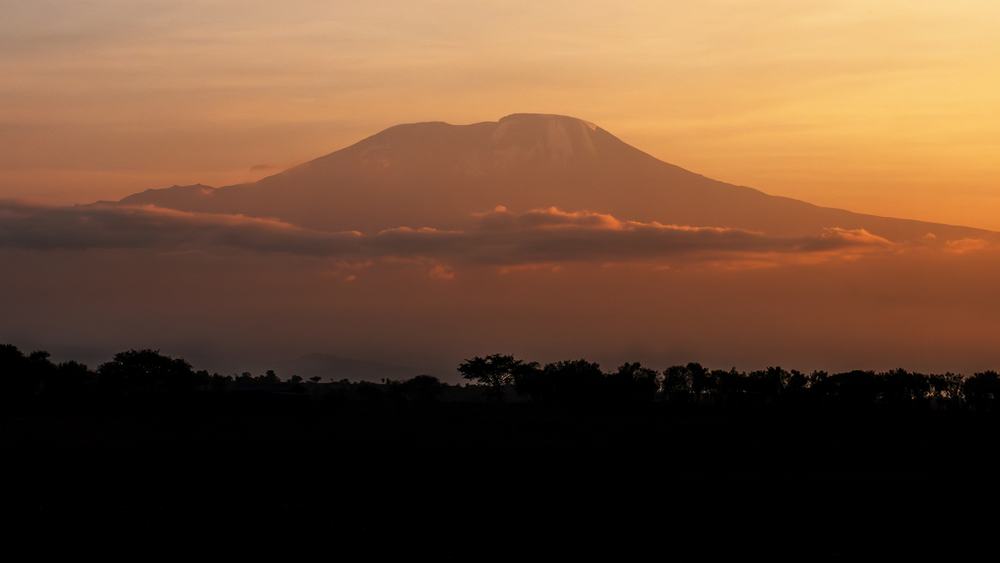
Mount Kilimanjaro, standing at 19,341 feet (5,895 meters), is Africa’s tallest peak. Compared to the massive ranges of Asia, it is a much smaller mountain. Its singular prominence and volcanic origin set it apart from Asia’s highest mountains.
Climbing Kilimanjaro is very different too; it does not require the technical mountaineering skills or equipment needed for its Asian counterparts. Instead, it offers a trekking experience accessible to those with good fitness levels, making it an achievable dream for many.
Interested in climbing Kilimanjaro? See our dates and prices.























































